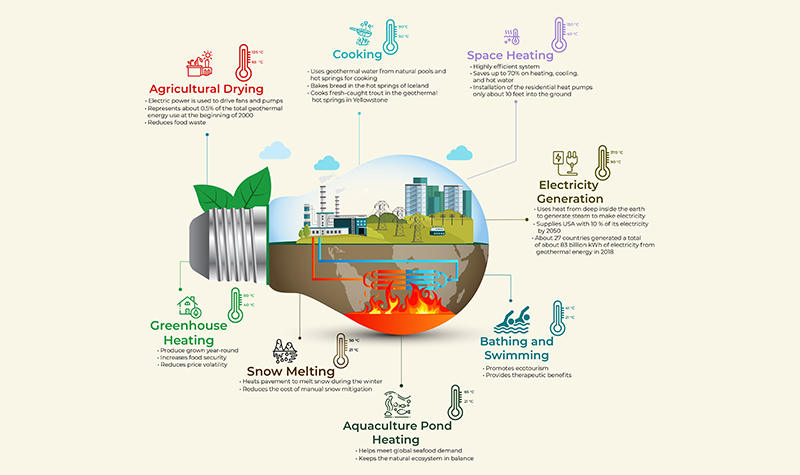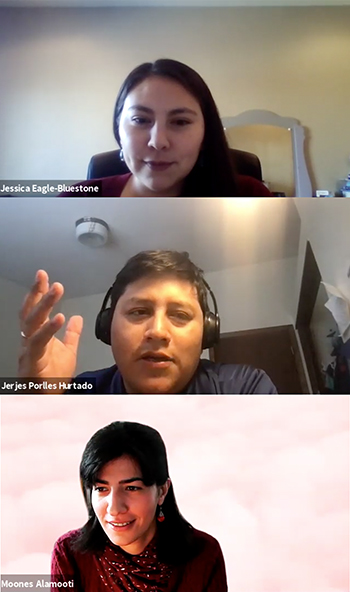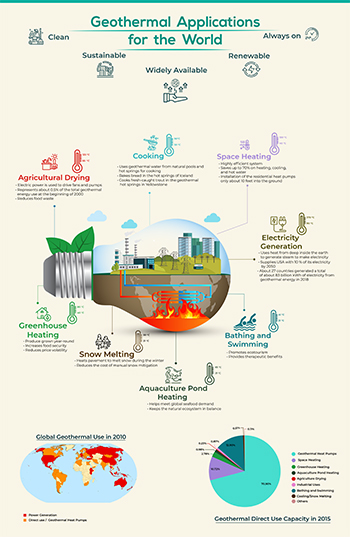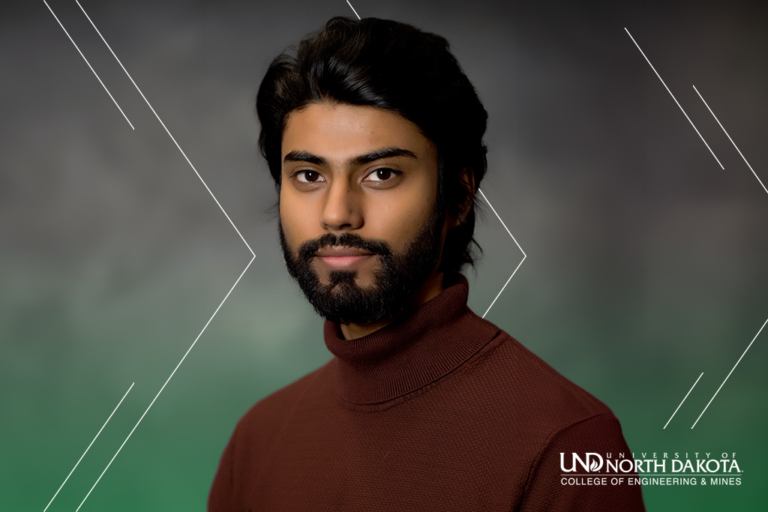UND team wins U.S. Department of Energy design competition

Three grad students in geophysics and petroleum engineering teamed up to enter the DoE’s Fall 2020 Geothermal Design Challenge, and won
Take a class at UND. Enter a national competition. Win.

Just another day at the University for three UND students, who entered a U.S. Department of Energy contest after learning about it in Geothermics II, and wound up winning first place in the United States.
Moreover, the students put together their entry – a powerful, high-quality infographic to illustrate the benefits of geothermal energy production – entirely over Zoom. “We didn’t have any real in-person meetings,” said Jerjes Porlles Hurtado, one of the three and a UND graduate student in petroleum engineering.
“It was weird but also great. I think it’s a sign of the professionalism that UND teaches that we can develop these kinds of projects even in this pandemic situation.”
Moreover again, this wasn’t the first project the students had worked on that turned out to be national class. The three of them also took part (and did well) in a separate competition last fall. In that earlier contest, the three graduate students, a dozen other students from UND and a few students from other universities were the Dreamer Geothermophiles, a UND-based engineering team that won funding last fall in a DoE geothermal manufacturing competition.
That first contest (involving the Dreamer Geothermophiles) was for the American-Made Geothermal Manufacturing Prize. The newer competition was the Fall 2020 Geothermal Design Challenge. The latter is the contest that the three UND students – calling themselves Thermal Vision – entered as a team, and won.
“These kinds of projects are extracurricular, but I encourage everyone to participate in them,” said Moones Alamooti, a Dreamer Geothermorphile, member of the first-place Thermal Vision team and graduate student in geophysics. Alamooti also could be described as a newly accomplished graphic artist, given that her computer-design skills were the foundation of the three-person team’s award-winning infographic.
“It takes a lot of effort and time, but at the end of the day, you learn so much, and the connections and friendships you make with other students are so valuable.”
A North Dakota energy resource that dwarfs oil and gas
And moreover again, the geothermal energy that the students are calling attention to represents a priceless asset for North Dakota. “It’s widely available, always on and renewable,” said Jessica Eagle-Bluestone, Thermal Vision member, Dreamer Geothermophile, and a graduate student in petroleum engineering.

And as UND Professor Will Gosnold explained in Geothermics II, there is 10,000 times more energy available in geothermal form beneath North Dakota than there is in oil and gas, Eagle-Bluestone said. “It’s a staggering resource that’s very promising for the future, and we wanted to communicate that message to North Dakotans,” she said.
Geothermal energy is harnessed from the natural heat of the Earth. That can mean tapping extremely hot water at great depths to generate steam, or using the moderate temperatures at much shallower depths to heat and cool businesses, schools and homes.
As mentioned, Eagle-Bluestone, Alamooti and Porlles Hurtado competed in and won the U.S. Department of Energy’s Fall 2020 Geothermal Design Challenge. “Starting in September, teams of graduate and undergraduate students were challenged to use infographics and data visualization to foster understanding of geothermal energy, broadly communicate the benefits of geothermal technologies, and ultimately help overcome key non-technical barriers to geothermal development,” the DoE’s website describes.
Students from across the United States did their best “to illustrate aspects of geothermal energy production, backed by robust technical data and accompanied by communications and outreach strategies to maximize impact.”
Some of the other teams from around the country submitted animated entries – tough competition, Alamooti said. “So, when the list of winning entries came out, I first looked at the third-place team, because that’s as high up as I thought we’d get,” she said.
“I didn’t find our name in third, so then I looked at the second-place listing. I didn’t want to think about ‘first’ because I didn’t think we had a chance.”
Then she saw University of North Dakota in the first-place spot, as well as Thermal Vision, her team’s name. “I was so surprised and excited,” she said. “I immediately sent an email to everyone to let them know that at the end of the day, we got an even better result than we’d been hoping for.”
The power of collaborative learning

Gosnold, Chester Fritz Distinguished Professor in UND’s Harold Hamm School of Geology and Geological Engineering, said he marvels at the students’ initiative, creativity and communication as well as technical skills.
“I am so proud of our students for their accomplishments,” he said.
Plus, he’s delighted that both the Thermal Vision and Dreamer Geothermophiles teams are making the most of UND’s collaborative learning style.
“When I was in school, it was totally passive learning,” Gosnold said. Today, in contrast, the students are active, involved, and working on teams almost from the day they first set foot in class.
That means the students and faculty alike treat each other as colleagues from the start. “For example, right now our department has another really big, really exciting geothermal project going on,” Gosnold said. “We’re writing a proposal, which we’ll be submitting soon. And I’m including our students in developing the proposal.
“When I was a grad student, the faculty hid that kind of thing from us,” Gosnold said. “But I know these students are smarter than I am, and I’m not just saying that. They can see things I can’t; they come up with bright new ideas, as they did in both of the geothermal competitions. So that really makes it work.”
Written by Tom Dennis


